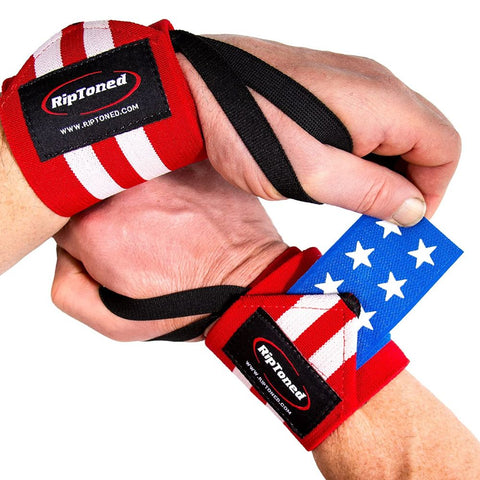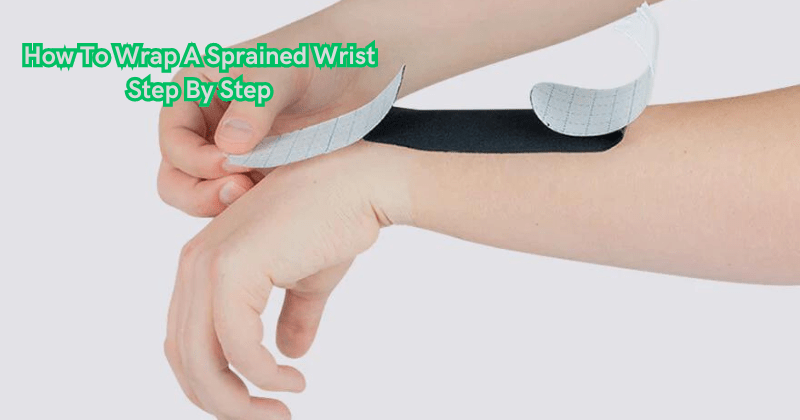A sprained wrist is a common injury that occurs when the ligaments in your wrist are stretched or torn. This can happen during physical activities, such as playing sports, or even just from a simple fall. If you have a sprained wrist, it's important to take care of it properly to prevent further damage and promote healing.
One way to treat a sprained wrist is by wrapping it with a bandage. This can help support the injured area and reduce swelling. In this guide, we will go through a step-by-step process on how to properly wrap a sprained wrist.
What is a sprained wrist?
A sprained wrist is an injury to the ligaments in your wrist. Ligaments are strong, fibrous tissues that connect bones and provide stability to joints. When these ligaments are stretched or torn, it can cause pain swelling, and restrict movement in the affected area.
Sprained wrists are common among athletes and people who engage in physical activities, which puts a lot of strain on the wrists. However, anyone can experience a sprained wrist from a fall or sudden impact on the wrist.
If left untreated, a sprained wrist can lead to chronic pain and weakness in the joint. Therefore, it's important to properly treat and wrap a sprained wrist to aid in its recovery.
Also, make sure to consult a doctor if you suspect a sprained wrist, as they can provide a proper diagnosis and recommend any necessary treatment.
Step-by-step guide on wrapping a sprained wrist
There are a few key steps to follow when wrapping a sprained wrist. These steps will ensure that the bandage is applied correctly and provides proper support for your injury.
- Gather supplies: Before starting, gather all the necessary supplies. This includes a bandage wrap, scissors, and any additional items recommended by your doctor.
- Start at the bottom: Begin wrapping the bandage at the bottom of your wrist, near your hand. Make sure to leave your fingers and thumb free for movement.
- Wrap in a figure-eight pattern: As you continue wrapping, make a figure-eight pattern around your wrist. This will ensure that the bandage provides proper support and stability to the joint.
- Overlap: Each round of wrapping should overlap about half of the previous one. This will help keep the bandage in place and prevent it from slipping.
- Cover affected area: Continue wrapping until you reach above and below the affected area to provide full coverage and support.
- Secure with clips or tape: Use clips or medical tape to secure the end of the bandage in place.
- Adjust for comfort: Make sure the bandage is snug but not too tight, as it should still allow for proper circulation.
- Check regularly: It's important to check the bandage and adjust it for comfort and proper support.
Why should you wrap a sprained wrist?
Wrapping a sprained wrist can provide several benefits for the injured joint. These include:
- Support and stability: A properly wrapped bandage can help support and stabilize the affected area, reducing pain and promoting healing.
- Compression: The pressure from the bandage can also help reduce swelling by compressing the tissues in the injured area.
- Protection: Wrapping a sprained wrist can also provide protection from further injury, especially during physical activities.
- Mobility: Despite the injury, a wrapped wrist can still allow some movement while limiting excessive motion that may worsen the sprain.
- Faster recovery: By providing support and protection, wrapping a sprained wrist can aid in its recovery and potentially shorten healing time.
- Inexpensive and easy: Wrapping a sprained wrist is a simple and cost-effective way to treat the injury, making it accessible to anyone.
Can you prevent a sprained wrist?
While it's not always possible to prevent a sprained wrist, there are some steps you can take to reduce your risk. These include:
- Strengthening exercises: Regularly performing exercises that strengthen the muscles and ligaments in your wrists can help prevent injuries.
- Proper technique: Whether playing sports or engaging in physical activities, make sure to use proper form and technique to avoid strain on your wrists.
- Wear protective gear: If participating in high-risk activities or sports, wear wrist guards or other protective gear to prevent injury.
- Take breaks: Regular breaks during physical activity to rest and stretch your wrists.
- Listen to your body: If you experience any pain or discomfort in your wrists, stop the activity and rest to avoid potential injury.
Does a sprained wrist require medical attention?
There are varying degrees of sprained wrists, and the severity of your injury will determine if medical attention is necessary. If you experience severe pain, swelling, or difficulty moving your wrist, it's best to consult a doctor for proper diagnosis and treatment.
Additionally, if symptoms persist or worsen over time, seek medical attention, as there may be underlying issues that need to be addressed. With proper care and treatment, a sprained wrist can fully recover, allowing you to return to your regular activities pain-free.
Plus, by knowing how to properly wrap a sprained wrist and taking preventive measures, you can reduce your risk of experiencing this common injury in the future. Remember to always listen to your body and seek professional medical advice if necessary for any injury.
Should you continue to wrap a sprained wrist for an extended period?
While it's important to properly wrap a sprained wrist during the initial stages of recovery, it's not necessary to keep the bandage on for an extended period. As your injury heals, you may gradually decrease or stop using the bandage altogether.
However, if you experience any recurring pain or instability in your wrist, it's best to consult a doctor and potentially continue using the bandage for added support. It's important to listen to your body and give your wrist time to fully heal before resuming strenuous activities.
And remember, proper treatment and care can greatly aid in the recovery of a sprained wrist. So follow these steps and consult a medical professional for a speedy and successful recovery.
Tips for preventing future wrist injuries
There are a few general tips to keep in mind that can help prevent wrist injuries, including sprains:
- Maintain good posture: Poor posture can put unnecessary strain on your wrists and lead to injury. Make sure to maintain good posture throughout the day, especially when sitting at a desk or using electronic devices.
- Stretch regularly: Just like any other part of your body, your wrists can benefit from regular stretching to maintain flexibility and prevent injury.
- Use proper ergonomics: When using tools or equipment that require repetitive motions, make sure to use proper ergonomic techniques to avoid strain on your wrists.
- Warm-up before physical activity: Before engaging in physically demanding activities, take the time to properly warm up and stretch your wrists. This can help prevent sudden strain and injury.
- Listen to your body: As always, it's important to listen to your body and pay attention to any pain or discomfort in your wrists. If something doesn't feel right, stop the activity and give yourself time to rest and recover.
Remember, prevention is key when it comes to wrist injuries, so be mindful and take care of your wrists to avoid potential sprains. If you experience a sprain, remember these tips for treating and recovering from the injury.
FAQs
How do I properly wrap a wrist sprain to ensure optimal healing?
Begin by ensuring the wrist area is clean and dry. Take an elastic bandage and start wrapping it from the base of the palm, moving towards the wrist. Ensure the bandage passes between the thumb and index finger at least once to secure the wrist adequately. The wrap should be snug but not too tight to restrict blood flow. This method provides essential wrist support, promoting recovery while allowing minor movements.
What type of wrist support is recommended for a wrist injury like a sprain?
For a wrist injury, especially sprains, using a wrist wrap or an elastic bandage offers immediate support and helps in reducing swelling. For more severe injuries or to prevent movements that could hinder recovery, wrist splints or a wrist splint can be more effective. These devices limit wrist motion, protecting the injured area during the healing process.
Can wrapping a sprained wrist help with symptoms of carpal tunnel syndrome?
While wrapping a sprained wrist primarily aims to support and immobilize the wrist for healing, it can inadvertently alleviate some symptoms associated with minor carpal tunnel syndrome by stabilizing the wrist position. However, it's crucial to consult a healthcare professional for a proper diagnosis and treatment plan tailored to carpal tunnel syndrome.
What additional steps should I take after wrapping my wrist for a sprain?
After wrapping the sprained wrist, apply an ice pack over the wrap for 15-20 minutes every few hours during the first 48 hours to reduce swelling. Keep the wrist elevated when possible, and avoid activities that could exacerbate the injury. If the pain or swelling increases, or if the wrap restricts blood flow, adjust the tightness accordingly or seek medical advice for further treatment options.
Conclusion
Properly wrapping a sprained wrist can provide support, protection, and aid in its recovery. However, it's important to take preventive measures to reduce the risk of future minor injuries. If you experience severe or persistent symptoms, seek medical attention for proper diagnosis and treatment.
Listen to your body and give yourself time to heal before resuming strenuous activities. With proper care and treatment, a sprained wrist can fully recover, allowing you to return to your regular activities pain-free.
Stay mindful of these tips, and take care of your wrists for a healthy and injury-free lifestyle. So continue to stay active, but always remember to take precautions and listen to your body to avoid any potential wrist injuries in the future.









